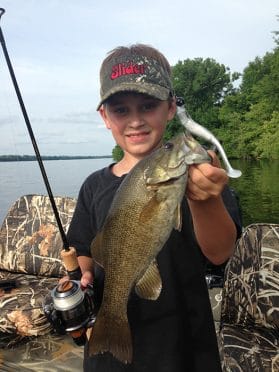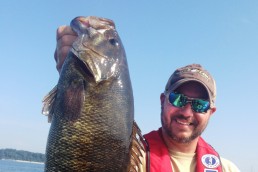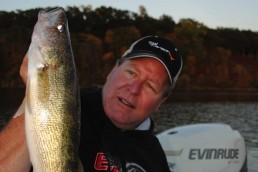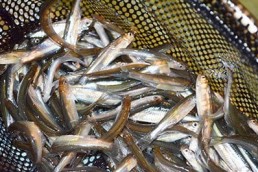The Bronze Bombs of Fall
SHARE THIS POST
The great thing about fall in the Tennessee River Valley is the largemouths really put on a show. From shallow-water cranking to blowing up on hollow-bodied frogs, it’s almost nonstop action. After all, that’s what the area has become famous for. But, according to B’n’M pro Brad Whitehead, fall is when the world-class smallmouth fisheries come into their own. Brad is a guide on the Tennessee River and says when the evening turns cooler, it’s time to get after the brown fish. Of course, even though the first day of fall is September 22, it’s mid-October before things get started. It takes seven to ten days of cool nights to impact water temperature. When it finally does drop, the smallmouths really put on the proverbial feedbags.
According to Whitehead, there are three key factors in finding and catching fall smallmouths. The first and arguably most important is current. The fishing is mediocre with little to no current, but picks up in relation to the flows. This is because the current moves the bait down the edges of any current break. Since smallmouths are ambush hunters, they will lie in wait for the bait to come to them. This gives the fish a chance to lie in, or behind, a break in the current. The fish get the benefit of moving bait, but they won’t have to fight the current to catch it.

The second factor here is structure and cover. Smallmouths prefer a different type of these than their cousin, the largemouth. Whitehead says, in the fall, he looks for major breaks in the river flow. His favorites are the numerous shell mounds—old Indian mounds that were flooded years ago. Second are creel arms where a hungry smallmouth can hold in the slack water in the creek and still have access to the bait moving downstream in the main current. Last, but not least, are the rock walls and jetties below the many dams on the river.
Are you enjoying this post?
You can be among the first to get the latest info on where to go, what to use and how to use it!
The third factor is presentation. Since the primary forage in the Tennessee River, in the fall, are threadfin shad, he tries to stay close to that. However, smallmouths always love a crayfish. So, he advises to keep one of those tied on as well. Presentation is slow and methodic. Make sure your baits are right on top of any break in the current, so the fish can see them.
When asked about baits, his advice was very straightforward. If you’re going to fish live bait, it’s nearly impossible to beat live threadfin. If you can’t get those, look for bass shiners 3.5 to 5 inches long. They are almost as good. Most bait shops on the river should have them all winter. Equipment for fishing the live bait is a 6.6- to 7-foot spinning rod, reels just need to have a good drag. You will be fighting both the current and the fish. Line is a little different on the live bait rods, as he prefers a high-vis line. Even in clear water, Whitehead feels the ability to detect a strike outweighs any perceived negatives about colored line.
When he uses artificial baits, the Charlie Brewer’s 5-inch shad, paired with a 1/8- to 1/4-ounce unpainted jighead, is his go-to lure. It mimics our native shad very well, and has a very natural swimming action. Second is a 3/4-ounce football-head jig in Green Pumpkin or blue/black. These get paired with a matching crayfish trailer. This combo allows him to probe deeper structure in the current. Last, but certainly not least, is a bait that has been catching smallmouths since the day it hit the shelf: a 3- to 4-inch, curly tailed grub paired with a 1/4-ounce, unpainted jighead.
MWO
SHARE THIS POST
Did you enjoy this post?
You can be among the first to get the latest info on where to go, what to use and how to use it!
Troy Basso
Troy Basso is a freelance outdoor writer and photographer from Tennessee. He may be reached though his website at troybassooutdoors.com.



